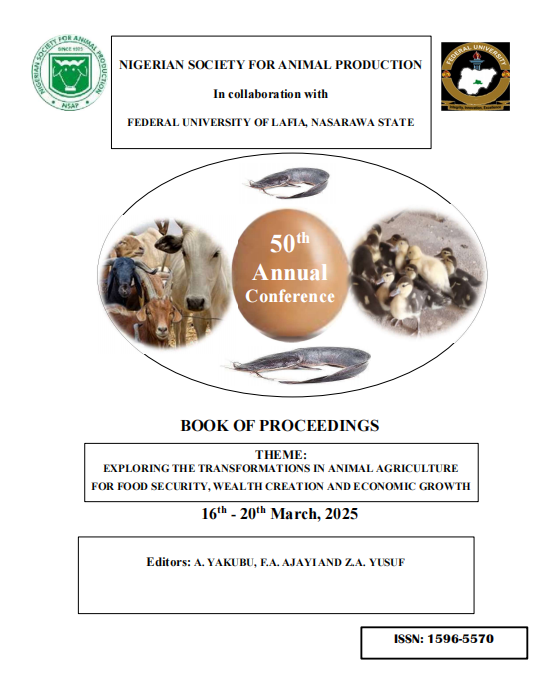HAEMATOLOGICAL PARAMETERS OF WEST AFRICAN DWARF RAMS FEDSELECTED BROWSE PLANTS AND GUINEA GRASS HAY
Mots-clés :
Tropical browse plant fodders, Guinea grass hay, WAD rams, Haematological parametersRésumé
The impact of 70-days feeding trial of selected browse fodders with guinea grass hay basal diet on haematological parameters of West African dwarf rams was investigated at the Teaching and Research Farm of Oyo State College of Agriculture and Technology Igbo-ora, Nigeria. Sixteen (16) growing WAD rams of age 6-9
months with body weight of 9.00 - 12.00kg were randomly allocated to four dietary treatments with four rams each and 2 rams per replicate in a completely randomized design. The experimental diet was fed at 3% body weight of individual ram while G. arborea, S. sesban and F. thonningii fodders were fed at varied proportions with Panicum maximum hay. The compared treatment diets were: T1 (sole100%PM hay), T2 (70%PM hay: 30%GA), T 3 (70%PM hay: 30%SS) and T
4 (70% PM hay: 30%FT) and fed to each individual ram per day. Significant (p<0.05) differences were observed in all parameters determined across dietary treatments except monocyte. Ram fed diet T 3 had the highest Packed cell volume (26.0%), while the lowest value (23.0%) was recorded on ram fed diet T₁. Ram fed diet T 1 recorded least haemoglobin (6.80g/dl) while the highest (8.60g/dl) was recorded in ram fed diet T 3 . However, ram fed T 3 diet had the highest Red Blood Cell count of 10.21 x106µl while those fed T1 diet recorded the lowest value of 8.14 x106µl. From the results, T3 proved to be the best diet in this study as it has a good nutrient profile and enhanced the productivity of growing rams.

